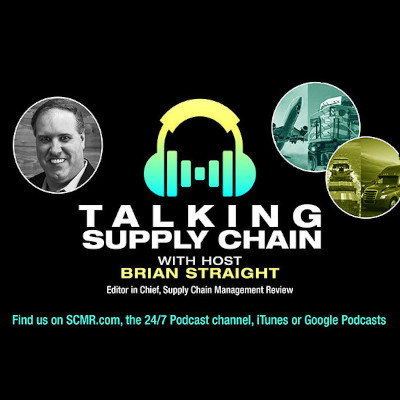A recent survey from Boston Consulting Group found that 65% of executives are prioritizing supply chain and manufacturing costs as the biggest levels for organizations to pull for cost savings. This trumps traditional cost-reduction areas such as labor and nonlabor overhead costs (cited by 52%).
“Lingering uncertainty, the need to reshape operations for the future, and disruptive technologies (such as generative AI) are motivating leaders to put cost management at the top of the to-do list,” the report indicated.
But, while executives may be looking to rein in costs, that doesn’t mean supply chains are facing large-scale cuts to their budgets—or people. In fact, Laura Juliano, managing director and senior partner at Boston Consulting Group, says that strategic cost control is the right approach. And it is being helped by the amount of data that is now flowing into organizations.
“First of all, there was a significant increase in our executives declaring that they have the right information and visibility to make the decisions necessary to manage their costs. It was actually pretty low at the end of 2022, the beginning of 2023. And now over the course of that year, executives start to believe that they have the right information so that they can move forward and make decisions,” Juliano told the Talking Supply Chain podcast.
BCG surveyed over 600 global executives across various industries for its report, “The CEO’s Guide to Costs and Growth.” In the podcast episode, Juliano noted some areas where companies can look to better control costs rather than taking a slash-and-burn approach.
“Executives are now looking at the areas of cost management as the way to fund versus an extreme and acute need to cut costs for the sake of cost,” she said, noting that procurement and strategic sourcing are major areas to focus on, as well as supply chain visibility.
Procurement under pressure
A separate study conducted by Sedex, a sustainability software provider, that surveyed over 250 senior procurement leaders at North American companies (not Sedex customers) at the end of 2023, found that 40% are ignoring sustainability in their procurement operations, and 37% said they are unaware of sustainability-related legislation that impacts their businesses.
Juliano said that procurement represents a good area to attack because it is an area “where you can make significant changes without having to change your employee base drastically.”
“Spend cost reduction is perennially a high priority for procurement,” explained Chris Sawchuk, The Hackett Group's principal and global procurement advisory practice leader. “But economic concerns have propelled it back into the top spot this year. In addition to the array of global economic challenges, companies are concerned about their ability to grow revenue, so cost focus and margin expansion are key. Many companies are even hoping to claw back some of the inflationary cost increases to support margin growth.”
The Hackett Group recently released its 2024 Procurement Key Issues research, which found that the top issue for procurement professionals this year is cost reduction.
Juliano said that planning and network are two areas where big ticket savings are possible. She advised that thinking within a one- to two-year timeframe, which can change the way executives approach cost control. Work from an integrated business plan, Juliano said, and then you can “work to the other areas of the business and start to reverberate that efficiency throughout.”
Juliano said she spends about half her consulting time working on procurement issues.
“It is such a strategic backbone of operations and a huge area of opportunity,” she said. “I mean, procurement is where sustainability is driven. It’s where innovation happens. It’s where risk is managed. I mean, there’s just so many elements to it, but you’re absolutely right. The vast majority of clients that I have, have significant inefficiency in procurement.”
The past few years saw a lot of turnover in procurement organizations, Juliano said, and many of the people in charge just lived through the pandemic where the only focus was on getting material and getting it out the door so the factory didn’t stop.
“Now that we’re back in a world of actually having a big spider chart of quality of lead time, of cost that you have to manage, it’s a different way of doing your job,” she said.
Juliano said she sees significant savings coming from departments when procurement is not involved, such as IT or temporary labor. Look for departments where spending takes place but procurement is not in the picture. IT, for instance, usually controls software license and other hardware spending, but procurement could find savings if it understood IT’s needs and was involved in the sourcing effort.
SC
MR


More Procurement Strategy
- What is the future of procurement?
- The disconnect between procurement budgets and efficiency
- Gartner identifies top constraints, solutions to long-term success
- Keynotes from Procter & Gamble, Johnson & Johnson & Whirlpool execs highlight NextGen conference agenda
- Managing procurement in a price-sensitive environment
- More Procurement Strategy
What's Related in Procurement Strategy

 Explore
Explore
Topics
Procurement & Sourcing News
- Three frameworks for creative problem-solving in supply chain
- Mitigating geopolitical uncertainty: 4 essential tactics for industrial CSCOs
- Supply chain strategy for medical devices: A Q&A with industry expert Sanjay Gupta
- Inventory Management and the Supply Chain: Outlook 2025
- How technological innovation is paving the way for a carbon-free future in logistics and supply chains
- Parcel shipping spend: The untamed holdout in today’s supply chains
- More Procurement & Sourcing
Latest Procurement & Sourcing Resources

Subscribe

Supply Chain Management Review delivers the best industry content.

Editors’ Picks




